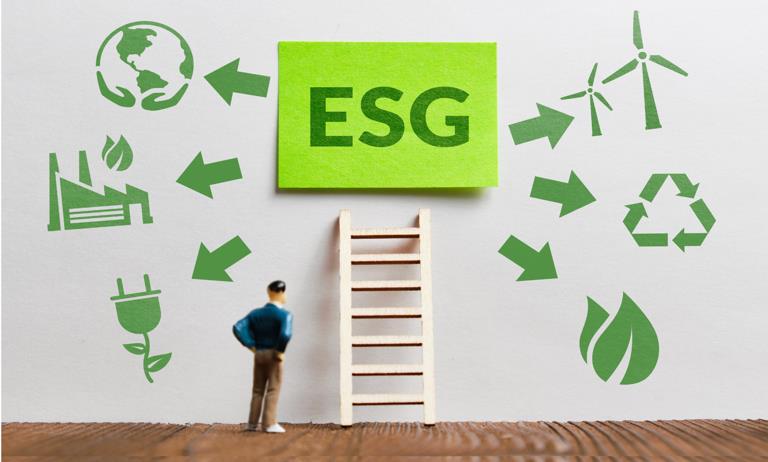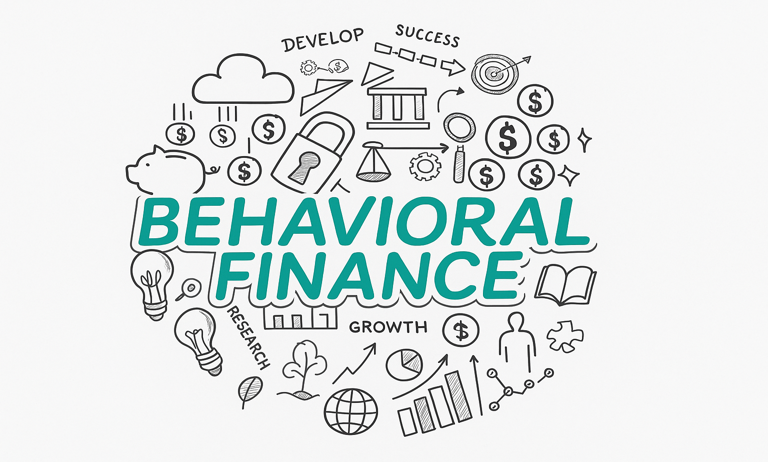ESG
and its importance in the Finance Industry
Introduction:
Imagine
a company that produces biodegradable packaging materials and has a vision to
reduce waste and promote environmental responsibility. For this, they ensure
that their raw material is sourced ethically, takes good care of its employees,
and is transparent about its ESG practices. For a mid-sized company like this, attracting
mainstream investors a decade ago would have been difficult. Today, investors
are also looking to support companies that act responsibly and give equal
importance to profitability and sustainability. This shift in trend highlights
that companies that prioritize ESG are not just doing good sustainably, they
are also doing well financially. Let's now understand what ESG is-
What is ESG?
ESG
refers to Environmental, Social, and Governance factors, which are used to
assess the sustainability and ethical implications of investment decisions
essential for assessing companies by investors, consumers, and stakeholders.
Investment funds that incorporate Environmental, Social, and Governance
criteria have experienced substantial growth, drawing in trillions of dollars.
This momentum signals a wider movement toward responsible investing, where
financial returns are weighed alongside social and environmental considerations
It
sets the criteria that help companies in evaluating how the business operates-
environmentally, assessing factors like sustainability and carbon footprints,
social factors like corporate ethics and community impact, and governance
factors like regulatory compliance.
According
to Gartner, over 85% of investors considered ESG factors before making the
investment decision in 2020 (3), and “ESG investment is expected to
surpass $50 trillion by 2025,” according to a Bloomberg report (4).
This clearly states that businesses embracing sustainability are gaining investors'
confidence. Companies with strong ESG practices have also seen growth in their stock
performance, and as a result, now 88% of publicly traded companies are
incorporating ESG strategies to ensure long-term growth (5).
So,
ignoring ESG now is not just about reputational risk but is considered bad
business. As the financial world grows,
ESG is not a trend anymore, but it’s the future.
ESG and Financial
Performance: A Strategic Advantage
Environmental,
Social, and Governance factors are not just ethical considerations but also key
drivers of financial performance. Companies integrate ESG for better risk
management, lowering operational costs, and gaining investor and consumer
confidence.
·
Reduced
Regulatory and Legal Risks
Governments worldwide are working on ESG regulations and companies that
proactively work towards ESG avoid fines, lawsuits and reputational damage. Example:
The EU’s Sustainable Finance Disclosure Regulation mandates transparency in companies'
ESG practices, pushing firms to adopt responsible practices (6).
·
Lower
Operational Costs
Adapting sustainable practices like waste reduction and energy efficiency leads
to cost savings.
Example: Unilever launched its Sustainable Living plan in 2010 to reduce its carbon
footprint, cutting costs while improving brand reputation (7).
·
Stronger
Investor and Consumer Trust
Investors look for ESG-compliant companies, leading to higher stock valuations
and lower volatility. Consumers also increasingly support sustainable companies
as they prefer brands that align with their values.
Example: Patagonia uses recycled materials and encourages customers to repair
old Patagonia clothes instead of buying new ones. This strategy has helped them
in higher customer retention and increased revenue (8).
The Role of Carbon
Markets in ESG and Finance
Carbon
markets help businesses in managing their environmental impact by reducing
carbon emissions, which aligns with their corporate social responsibility.
Let's understand what the carbon market is and how it works.
Let’s
assume a large manufacturing company, TextilesCO, emits 1,00,000 tons of Carbon
Dioxide every year. The government has set a limit that allows companies to
emit only 80,000 tons. Now, as this company exceeds the limits, it has 2
choices-
·
Reduce
its emissions by adopting greener energy.
·
Buy
carbon credits from a company that emits less than its required limits.
Another
company, GreenCorp, runs a massive solar farm and emits 20,000 tons of carbon
dioxide by adopting clean energy. Since GreenCorp’s emissions are below the
limits so it gets carbon credits, which it can sell to TextilesCO. So,
TextilesCO buys 20,000 carbon points from GreenCorp to meet regulations and
continue operating without violating emission limits. Meanwhile, GreenCorp gets
additional revenue, rewarding its sustainable efforts.
So,
the Carbon market is a system where companies can buy and sell carbon credits,
helping businesses manage their carbon footprints while operating sustainably
and profitably. It
provides financial motivation for companies to minimize their environmental
impact.
Types of Carbon Markets
·
Compliance
Carbon Markets
These are government-regulated and operate under mandatory carbon reduction
programs. The emission limits are set by the government, and if companies are
exceeding this limit, they either must reduce it by adopting sustainable practices
or must purchase additional carbon points for compliance.
·
Voluntary
Carbon Markets
These markets operate outside government mandates, allowing businesses to buy
carbon credits to offset their emissions without legal requirements. They buy Verified
Emission Reduction (VERs) from projects like reforestation, renewable energy
etc. Example: Companies like Microsoft and Google invest in voluntary carbon
credits for carbon neutrality.
How Carbon Markets Work
Imagine
a marketplace where companies buy and sell carbon credits like an auction;
that’s how carbon markets work. Companies first need to measure how much carbon
they emit. Whether they are under their limit or over their limit. Then,
companies that are under their limit are the ones that have reduced emissions.
As a reward, they get carbon credits, which can be sold to companies struggling
to meet their emission targets. For Example, Companies like Tesla emit way less
than traditional automakers. So, it earns carbon credits and sells them to
companies like General Motors and Fiat (9). This acts as an
additional source of income, and thus Tesla makes millions in revenue from
sustainability.
Now,
to ensure carbon credits aren’t just false promises, regulatory bodies verify
that emissions reductions are real and are measured. Thus, carbon markets benefit
companies as companies comply with regulations to reduce their carbon
footprints and profit from eco-friendly initiatives.
Regulatory Landscape and
Global Trends in ESG
Business
is no longer just about profits- it's about accountability. Now, governments
and investors demand higher transparency and sustainability. ESG regulations
are reshaping investment strategies and flows. SEC’s ESG disclosure and Corporate
Sustainability Reporting Directive (CSRD) depict that ESG is no longer just
about ethics, but it’s a financial necessity now.
But
how do these policies impact investors, corporations, and markets? ESG
guidelines influence financial risk management, capital allocation, and corporate
decision making. This determines which companies will succeed as the economy
moves more towards climate awareness.
Key ESG Regulations
Shaping Global Finance:
· US SEC’s ESG Disclosure Rules
The U.S.
Securities and Exchange Commission (SEC) introduced a rule for public companies
to disclose climate-related risks in their financial reports. This aims to
provide investors with ESG data, ensuring that these companies are transparent
about their environmental impact (10).
These companies are expected to quantify their climate risks, such as carbon emissions,
regulatory fines, or climate-related disruptions. With this, investors have
better visibility into ESG risks, allowing them to make more strategic and
informed decisions. Investments will shift towards companies with strong ESG
strategies as they are perceived to be more stable and financially viable in
the long term.
· European Union’s Corporate
Sustainability Reporting Directive (CSRD)
The European
Union’s CSRD aims to transform ESG reporting by companies from optional sustainability
claims to mandatory, data-driven accountability (6). Companies now
operating in Europe must provide full disclosure about their sustainability
risks, carbon footprints, and government practices followed, making ESG an
integral part of their financial reporting. This directive ensures that businesses
are not just claiming to be eco-friendly but are proving it with numbers.
Thus, companies must integrate EU climate targets with their strategies, gaining
investors’ confidence and capital inflows. With ESG-compliant firms recognized
for their transparency, investors can now rely on standardized benchmarks to
assess corporate sustainability. With ESG, it's not just about good intentions
— it's about data, accountability, and sound financial strategy.
· SEBI’s ESG Disclosure Framework in
India
The Securities and
Exchange Board of India has made it mandatory for the top 1,000 listed
companies to disclose their ESG regulations, ensuring transparency. (11)
The Companies Act 2013 emphasizes board diversity by requiring companies to
appoint at least one female director. (12) Thus, as investor
interest in ESG frameworks grows, Indian companies are increasingly integrating
ESG practices into their strategies, aligning with ethical standards.
Challenges and Future
Prospects of ESG
As
ESG investing gains momentum, it also faces significant risks and challenges
that can change its future trajectory. Some challenges are-
· Greenwashing: The illusion of
sustainability
Some companies claim
their products to be eco-friendly while continuing harmful environmental
practices. A recent survey by EY shows that 85% of investors see greenwashing
as a growing problem (13). This occurs when companies exaggerate their
ESG reports to appear more sustainable to investors than they are. This
undermines investor trust and creates skepticism in investors’ minds. There
should be stricter regulations and independent ESG audits that can verify whether
claims made by companies are true or not, ensuring companies are held
accountable.
· Lack of standardization
There is no
universal ESG reporting framework, making it difficult for investors to compare
companies. Different countries use different criteria, leading to inconsistent
assessments. For example, the EU’s CSRD aims to standardize ESG reporting, but
universal acceptance is still lacking. Governments and financial institutions
must set a standardized set of rules, ensuring transparency and comparability
across markets.
· Evolving ESG policies
In this dynamic
world where policies and political changes occur rapidly, it creates
uncertainty for businesses and investors. Companies struggle to adapt to
evolving ESG requirements. Thus, there should be clear guidelines that are long-term
and sustainable, helping companies form their strategies accordingly.
Future Prospects: Will
ESG Investing Become the Norm?
ESG
assets are expected to surpass $50 trillion by 2025 (4), proving
that ESG is here to stay and becoming a core factor for investment decisions. Major
managers like BlackRock are integrating ESG into their portfolios, signalling a
long-term shift towards sustainable investing. Thus, ESG is on track to become a
mainstream financial strategy and will impact investor demand, regulatory
pressure, and corporate accountability.
Carbon
markets, on the other hand, are expanding rapidly, offering businesses new ways
of generating income. More companies and investors are showing keen interest in
ESG investing to achieve net-zero goals.
Carbon credits are also becoming tradable assets, allowing companies and
investors to profit from sustainability initiatives. Banks are also offering
green loans and sustainability-linked bonds, incentivizing companies to meet
ESG targets.
Thus,
while ESG faces challenges like greenwashing and regulatory uncertainties, its
future remains promising. ESG has the potential to become a fundamental pillar
of global finance.
Conclusion
The
world is undergoing a fundamental transformation, with ESG no more a moral
imperative but a strategic necessity. Over the years, it has become a new
financial reality. Financial institutions play a key role in standardizing the market,
making it more sustainable, cleaner and ethical. Companies that embrace ESG
will thrive, while others will fall behind. Thus, the choice is clear-
businesses, investors and policymakers must step up, adapt and invest in a
world where finance fuels sustainability.
Notes:
·
Deloitte,
#1 What is ESG?, March 2, 2022
·
ESG
the Report, What is ESG and Why is it Important?, January 2, 2025
·
Gartner,
The ESG Imperative: 7 Factors for Finance Leaders to Consider, June 10, 2021
·
Bloomberg,
ESG Asset Rising to $50 Trillion Will Reshape $140.5 Trillion of Global AUM by
2025, Finds Bloomberg Intelligence, July 21,2021
·
Key
ESG, 50 sustainability statistics you need to know in 2025, April 28, 2025
·
European
Commission, Sustainability- related disclosure in the financial services
sector, May 3, 2024
·
Hindustan
Unilever Limited, Sustainable Living
·
Michigan
Journal of Economics, Op-Ed: Patagonia Proves the Success of Sustainable
Corporations, November 22,
2023
·
Business
Insider, Tesla has made hundreds of millions of dollars selling tax credits to
other automakers. Now we know who bought them, June 4, 2019
·
U.S.
Securities and Exchange Commission, SEC Proposes Rules to Enhance and
Standardize Climate- Related Disclosures for Investors, July 14,2022
·
India
Briefing, ESG Reporting Mandates in India: Guidelines for Businesses, September
2, 2024
·
Science
Direct, On the side effects of mandatory gender diversity laws in corporate
boards, June 2022
·
ESG
News, EY Survey: 85% of investors see greenwashing as a growing problem in ESG
Reporting, December 11, 2024








